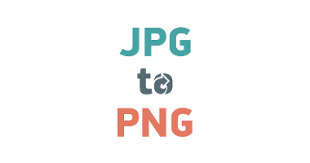
Contents
Converting JPG to PNG
Introduction
In the digital age, images are ubiquitous, serving as powerful tools for communication, expression, and storytelling. Whether capturing cherished memories or conveying complex ideas, the format in which an image is saved plays a crucial role in its quality, versatility, and usability.
Among the myriad image formats available, JPG and PNG stand out as two of the most commonly used options. While both formats have their merits, there are instances where converting JPG to PNG becomes necessary to meet specific requirements or achieve desired results.
This article explores the process of convert JPG to PNG online shedding light on the characteristics of each format, their differences, and the implications of conversion.
What is JPG?
JPG, short for Joint Photographic Experts Group, is a widely used image format known for its versatility and compression capabilities. It employs lossy compression techniques, meaning that some image data is discarded during compression to reduce file size.
As a result, JPG files are relatively small in size, making them ideal for web use, digital photography, and sharing on social media platforms. However, the compression process can lead to a loss of image quality, particularly in areas with intricate details or gradients.
What is PNG?
PNG, or Portable Network Graphics, is another popular image format favored for its lossless compression and support for transparency. Unlike JPG, PNG utilizes lossless compression techniques, preserving all image data without sacrificing quality.
This makes PNG files larger in size compared to JPG but ensures that no image detail is lost during compression. PNG is well-suited for graphics, logos, illustrations, and any scenario where preserving image quality and transparency is paramount.
Difference Between JPG and PNG
While both JPG and PNG serve specific purposes and have their advantages, they differ significantly in terms of compression, quality, and transparency:
- Compression: JPG employs lossy compression, which sacrifices some image data to reduce file size. This results in smaller file sizes but may lead to a loss of image quality, especially in areas with fine details. PNG, on the other hand, uses lossless compression, preserving all image data without compromising quality. As a result, PNG files are larger but maintain higher image fidelity.
- Transparency: PNG supports alpha channel transparency, allowing for varying levels of opacity and transparency within an image. This makes PNG ideal for graphics, logos, and illustrations that require transparent backgrounds or layered elements. JPG does not support transparency and is typically used for photographs and images with solid backgrounds.
- Color Depth: PNG supports a higher color depth than JPG, making it suitable for images with vibrant colors and complex gradients. JPG is better suited for photographs and images with natural scenes, where subtle variations in color and tone are important.
Conclusion
In conclusion, understanding the differences between JPG and PNG and knowing when to convert between the two formats is essential for optimizing image quality, file size, and transparency. While JPG is preferred for photographs and images with natural scenes due to its small file size and adequate image quality, PNG shines in scenarios where transparency, color accuracy, and lossless compression are paramount.
By converting JPG to PNG, users can preserve image quality, support transparency, and ensure compatibility with a wide range of applications and platforms. Whether for web design, digital art, or professional photography, the ability to convert between JPG and PNG empowers users to achieve their desired aesthetic and communicate their message effectively through images.
Read more article:- Blogtheday